Development of the Dräger lungenkraft dossiergeräte
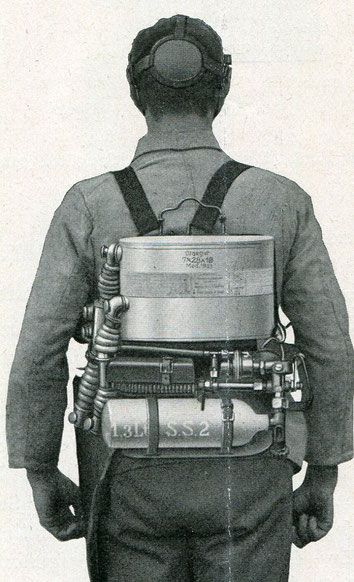
During the First World War, the first breathing apparatuses with breath-controlled dosage were designed and used. Examples of these early types are the HSS gerat (link) and Selbstretter Dräger Tübben (link). In other countries, too, apparatus with this type of gas distribution were already in use. Until around 1920, mainly injector models were used for respiratory protection, e.g. Dräger models 1904/1909, 1910/1911 and Westfalia.
Respiratory gas injection devices were further developed by Dräger after the First World War. A battle raged between Dräger and the English company Siebe as early as 1912 over the safety of injector systems versus breath-assisted systems. An important argument was the difference in pressure in the inhale and exhale sections of the devices. With an injector device, there is an overpressure in the supply of the fresh oxygen-rich gas. The injector caused an underpressure that sucked the Co2-rich gas through the scrubber. The disadvantage was that due to the underpressure in this part of the apparatus, in case of a leakage, dangerous substances could also penetrate the loop.
Breath-controlled units have an overpressure in both the supply and the return hose. The respiration-controlled dosing also resulted in a lower oxygen consumption. Most injector models were set to an oxygen flow of 2.0 ltr/min. Breath controlled models worked with a flow of 1,2 ltr/min.
The new breathing apparatus modell 1921 was equipped with a reducer with a constant flow regulator dosing 1.2 ltr/min. A manually operated bypass made it possible to dose extra oxygen if, for example, heavy work was being done. The counter lung of this unit was equipped with so-called extension springs. These squeezed the counter-lung flat, which, when gas was blown into it, created an overpressure of 2-4 mbar (1.96 -3.92 = 2-4 cm water column) in the circuit. This eliminated the risk of toxic gases entering the system as long as it was under pressure. An additional advantage was that the lung was empty when the device was taken in use. There was therefore no nitrogen in the counterlung which could lead to unconsciousness if not removed from the lung.
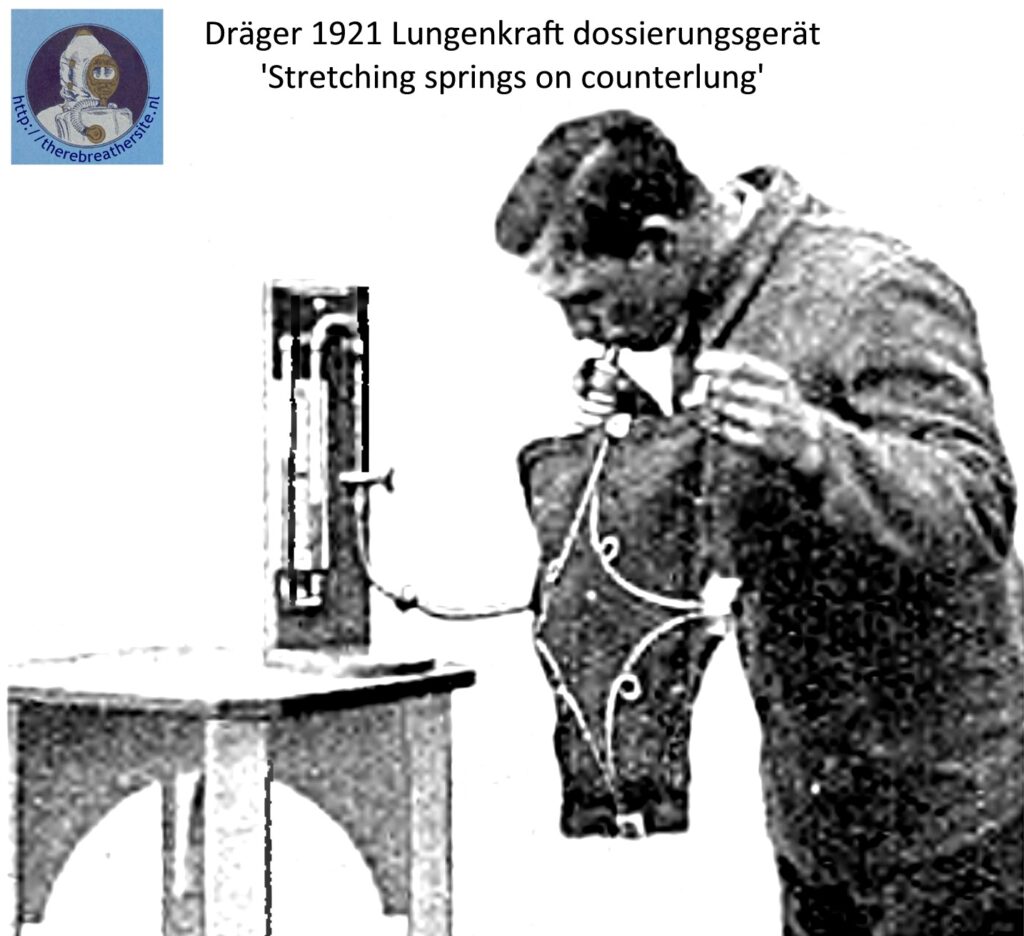
INTERMEZZO: (This unconsciousness may occur if the user uses a device in which the lung is filled with normal ambient air. The user will be able to breathe because there is a volume of gas 21/79 O2/N2 in the counterlung. As soon as the oxygen level drops due to the metabolic consumption of the wearer, the need for oxygen will not arise because there is no need to add oxygen. The Co2 stimulus is absent and the oxygen proportion in the gas mixture drops. The user will become unconscious without warning. For this reason, the loop must be flushed with pure oxygen).
In the run-up to the development of the 1921 model, a prototype was developed in 1919, the Dräger negative pressure model 1919. This device was equipped with a negative pressure dosing valve. The valve was also called “Depressionautomat”. The operation of the system was based on negative pressure. A large counter lung contained a volume of gas which offered the user approximately 6 breaths of breathing gas. As soon as there was an underpressure, the depression valve was activated and injected new gas into the lung. The advantage of the device was the lung-controlled dosage, which reduced oxygen consumption. However, there was also a major disadvantage, namely the need to use pure oxygen with a low nitrogen content. If oxygen with a relatively high nitrogen content was used, it could accumulate in the breathing loop.
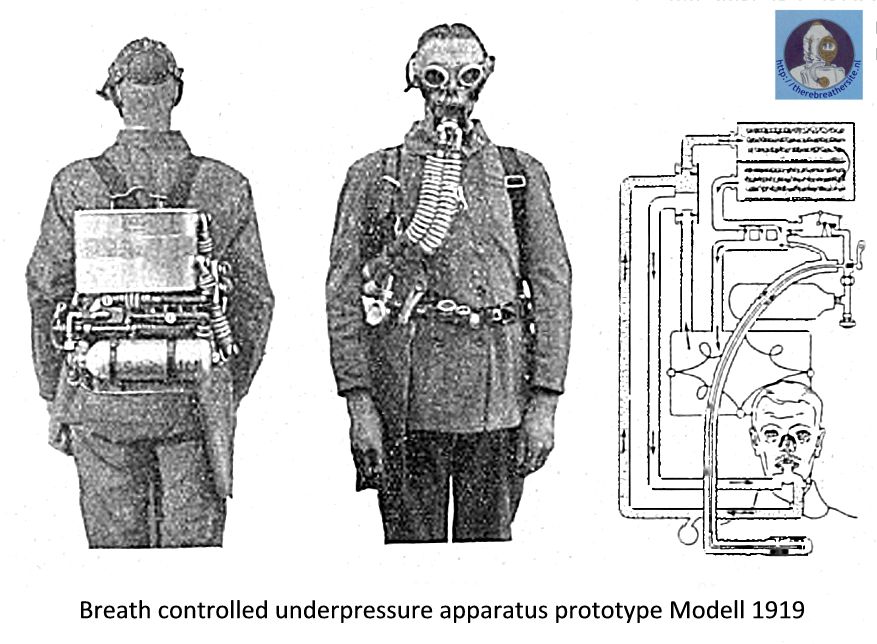
In 1920, the prototype Modell 1920 overcame the disadvantages of the suppressor by designing an overpressure apparatus. The apparatus contained a counter-lung between the scrubber and the oxygen cylinder. The lung operated a valve that injected oxygen when the volume reached a certain lower limit. At rest, the unit had an empty counter-lung that filled once the oxygen cylinder was opened. The regulator that links the counterlung to the dosing valve has been a feature of many Dräger devices for years. For 1920, too, it is necessary to use pure oxygen to prevent nitrogen narcosis.
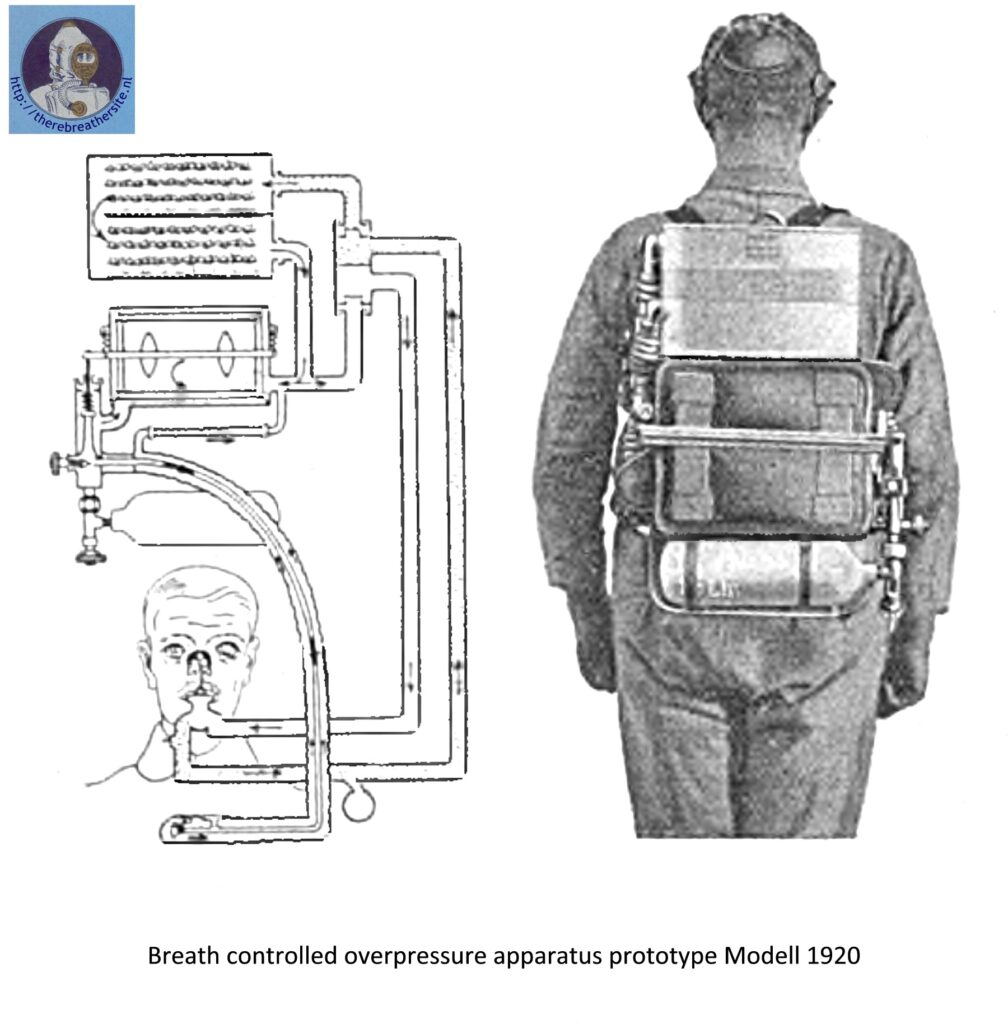
Finally, in 1921, the unit was brought into production with a hip-mounted counter-lung. The unit was equipped with a breath-controlled filing system with a flow of 1.2 l/min. The unit is equipped with a bypass valve for oxygen dosage and a purge valve to remove nitrogen from the barrel. The lime cartridge is of an interchangeable 7x28x18 type and the operating time was 2-3 hours depending on the carrier and the work. The unit has a weight of 18 kg. The unit had a 1.3 or 1.5 or 1.7 oxygenbottle. The dossage valve was situated between the gascilinder and scrubber.
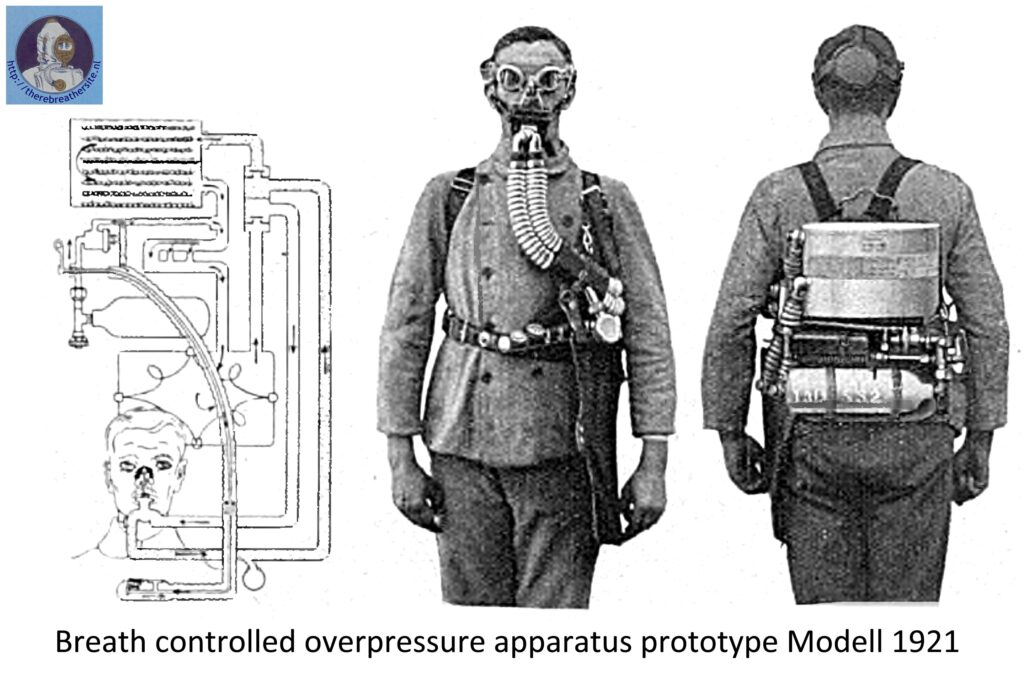
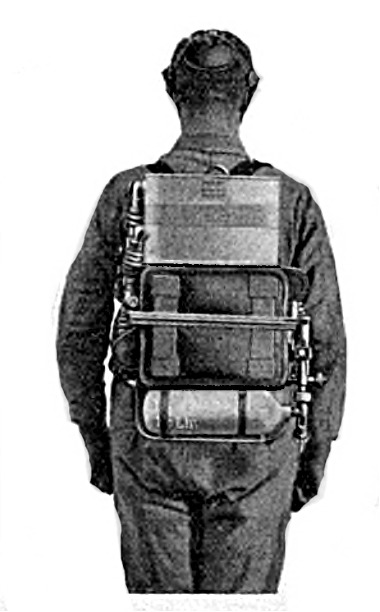
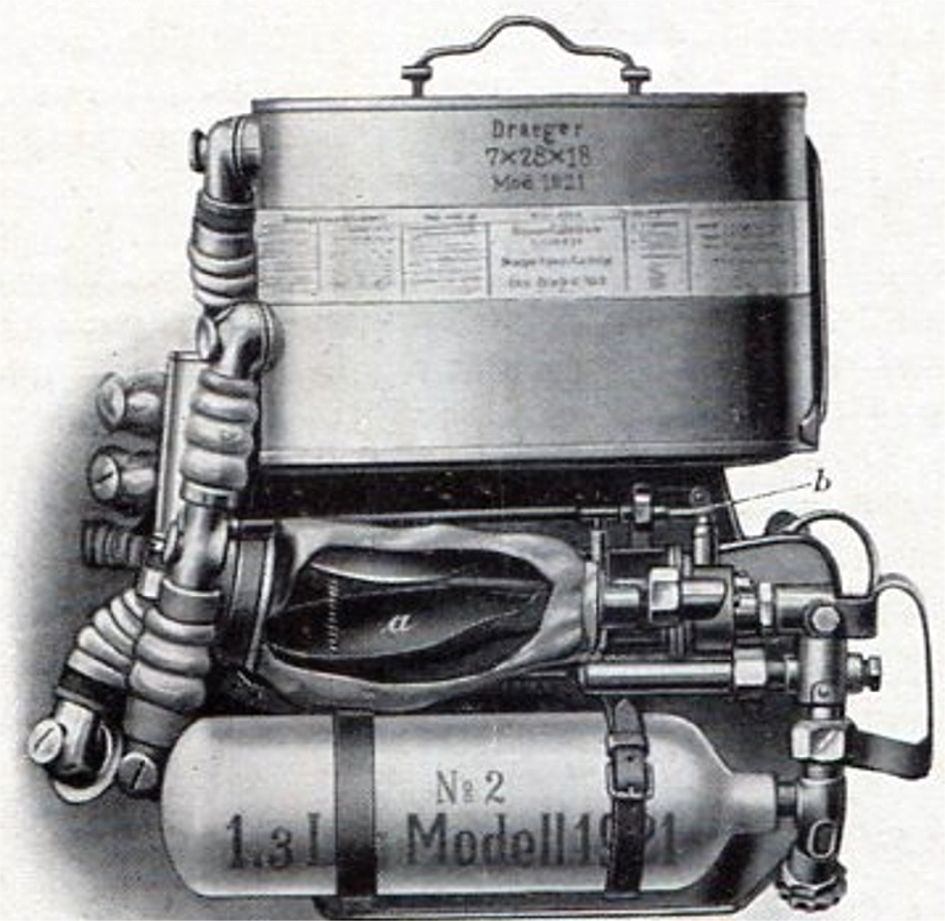
Unfortunately, there are hardly any pictures of the 1921 model. Your contribution to complete this article is therefore very welcome!

Therebreathersite was founded by Jan Willem Bech in 1999. After a diving career of many years, he decided to start technical diving in 1999. He immediately noticed that at that time there was almost no website that contained the history of closed breathing systems. The start for the website led to a huge collection that offered about 1,300 pages of information until 2019. In 2019, a fresh start was made with the website now freely available online for everyone. Therebreathersite is a source of information for divers, researchers, technicians and students. I hope you enjoy browsing the content!
